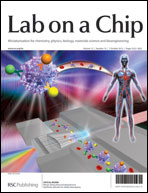We present the first integration of fluidically tunable filters with a separate particle detection channel on a single planar, optofluidic chip. Two optically connected, but fluidically isolated liquid-core antiresonant reflecting optical waveguide (ARROW) segments serve as analyte and spectral filter sections, respectively. Ultrasensitive detection of fluorescent nanobeads with high signal-to-noise ratio provided by a fluidically tuned excitation notch filter is demonstrated. In addition, reconfigurable filter response is demonstrated using both core index tuning and bulk liquid tuning. Notch filters with 43 dB rejection ratio and a record 90 nm tuning range are implemented by using different mixtures of ethylene glycol and water in the filter section. Moreover, absorber dyes and liquids with pH-dependent transmission in the filter channel provide additional spectral control independent of the waveguide response. Using both core index and pH control, independent filter tuning at multiple wavelengths is demonstrated for the first time. This extensive on-chip control over spectral filtering as one of the fundamental components of optical particle detection techniques offers significant advantages in terms of compactness, cost, and simplicity, and opens new opportunities for waveguide-based optofluidic analysis systems.

You have access to this article
 Please wait while we load your content...
Something went wrong. Try again?
Please wait while we load your content...
Something went wrong. Try again?


 Please wait while we load your content...
Please wait while we load your content...